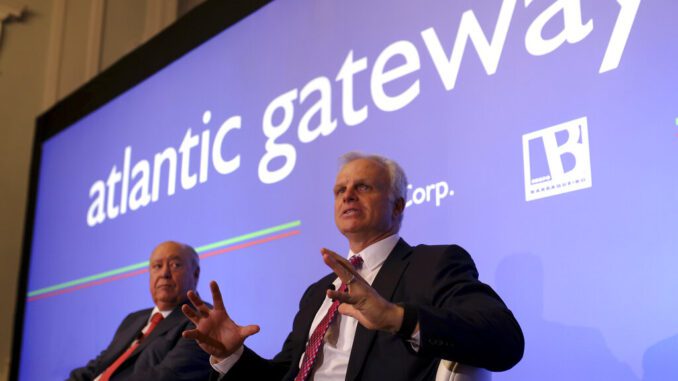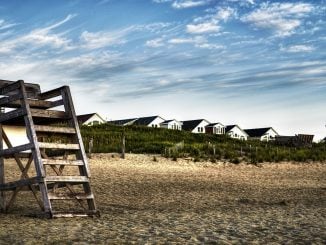
Americans are traveling in the greatest numbers in more than a year, and soon they will have two new leisure-oriented airlines to consider for those trips.
Both hope to draw passengers by filling in smaller strands on the spider web of airline routes crisscrossing the United States.
Avelo Airlines said Thursday that it will begin flying later this month to 11 destinations from Burbank, California. The startup plans to add other routes in the West as soon as it grows its fleet of three Boeing 737 jets.
Avelo was started by a longtime airline executive who thinks there is room for another low-fare carrier besides the several budget airlines already in the market.
“There are too few seats in the United States being offered by low-cost carriers. That’s why we think the opportunity is huge,” said Avelo Chairman and CEO Andrew Levy. “Customers want a really inexpensive way to get from Point A to Point B.”
Waiting in the wings is Breeze Airways, the latest creation of David Neeleman, who helped start Canada’s WestJet before founding JetBlue Airways and the Brazilian airline Azul.
Breeze plans to fly to “neglected, forgotten” markets, including many that larger airlines have abandoned. Breeze is currently running proving flights for the Federal Aviation Administration and could announce details around routes and fares as soon as next week and be carrying passengers in May.
The planning for both airlines started before the coronavirus pandemic hit, but they are starting up just as long-homebound Americans look to break out and travel like it’s 2019 again. More than 1 million Americans have been flying each day for nearly a month now, and numbers are expected to rise even more this summer.
The last new U.S. airline was Virgin America, which began flying in 2007 and disappeared after Alaska Airlines bought it for $2.6 billion in 2016.
Avelo
Levy is a former Allegiant Air and United Airlines executive who has finally achieved a years-long dream to start an airline.
Avelo’s strategy is straight out of the low-cost-carrier playbook that was first written by Southwest Airlines in the 1970s and copied by others including Allegiant. Part of that strategy involves sticking to secondary airports that have lower costs and less congestion — planes land, take on new passengers, and take off quickly, spending more time in the air and less on the ground.
“It’s not that it hasn’t been done before, it’s just that it hasn’t been done in a really long time — staying away from the really big airports wherever it is possible,” Levy says.
One of Avelo’s first destinations, Ogden, Utah, “is a nice, convenient, easy-to-navigate airport,” he says. “There are a lot of those around the country that have been unserved or at least underserved. Those are the markets we’re going to target.”
Allegiant is the only airline currently flying to Ogden, and only from Phoenix, while nearly a dozen carriers compete at nearby Salt Lake City.
Avelo’s first flight on April 28 will be from Burbank to Santa Rosa, in the Northern California wine country. No other airline flies that route, although Alaska Airlines goes to Santa Rosa from John Wayne Airport, about a 90-minute drive from Burbank.
The airline will fly 189-seat Boeing 737-800 planes, which are plentiful and, Levy says, a bargain on the used-plane market. The planes won’t have on-board Internet access, at least not this year.
Avelo launched with $19 promotional fares. Like other budget airlines, Avelo will charge extra for many options including an assigned seat and carry-on bags that go in the overhead bins.
Costs at a start-up airline “are real easy to forecast; the revenue is the hard part,” Levy says. If Avelo hits revenue targets, “we will definitely be profitable before the end of this year, and 2022 will be a profitable year.” That is roughly the same outlook analysts that have for the major U.S. airlines, which are known commodities with established customer bases.
Breeze
Breeze hasn’t detailed where it will begin operations, although the airline has hinted it will be in the Southeast including Florida, a popular destination for leisure travelers. Neeleman says the timing is right.
“Leisure traffic is crazy right now. A lot of people have vaccines, and younger, healthier people are like, ‘I’m good,’ ” Neeleman said in an interview. “There is a lot of pent-up demand, probably more than the seats that are available.”
In contrast to Avelo, Breeze will start out using smaller planes, 118-seat Embraer E-190s that it will lease, including some from Azul. Neeleman said the lower operating costs of the smaller planes will help his new airline succeed on routes that others are passing up or have abandoned.
“We can get trip costs that are 20% to 25% below where the other guys are,” he said. “Because we have a smaller airplane, we can go into markets that may not make sense for them but make all the sense in the world for us.”
There are “hundreds” of such overlooked routes, Neeleman says. He says about 80% of the airline’s capacity will be deployed on routes where there is no other nonstop service, only indirect connections.
Breeze hopes to grow its passenger traffic as it pivots to slightly larger Airbus A220 jets later this year. Like Avelo, Breeze planes won’t have a separate cabin for first-class or business-class seating, but Neeleman isn’t ruling that out when his airline begins flying the larger Airbus planes.


